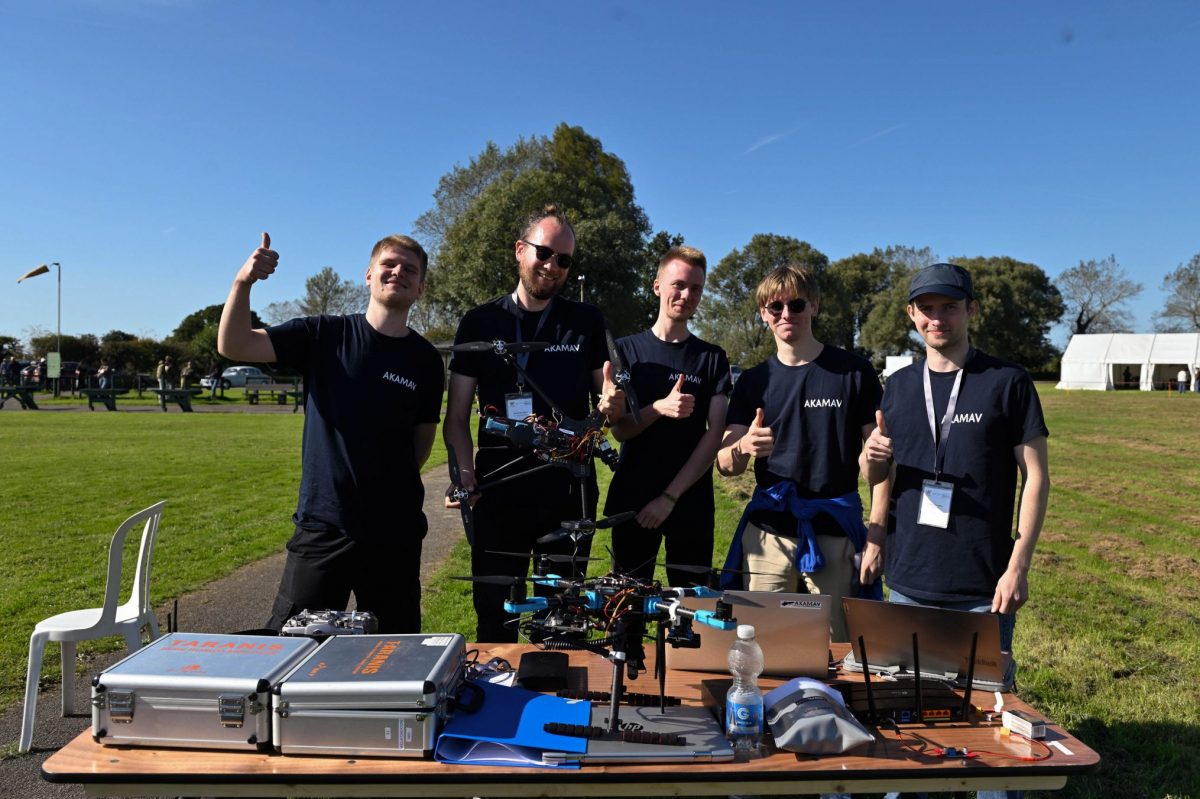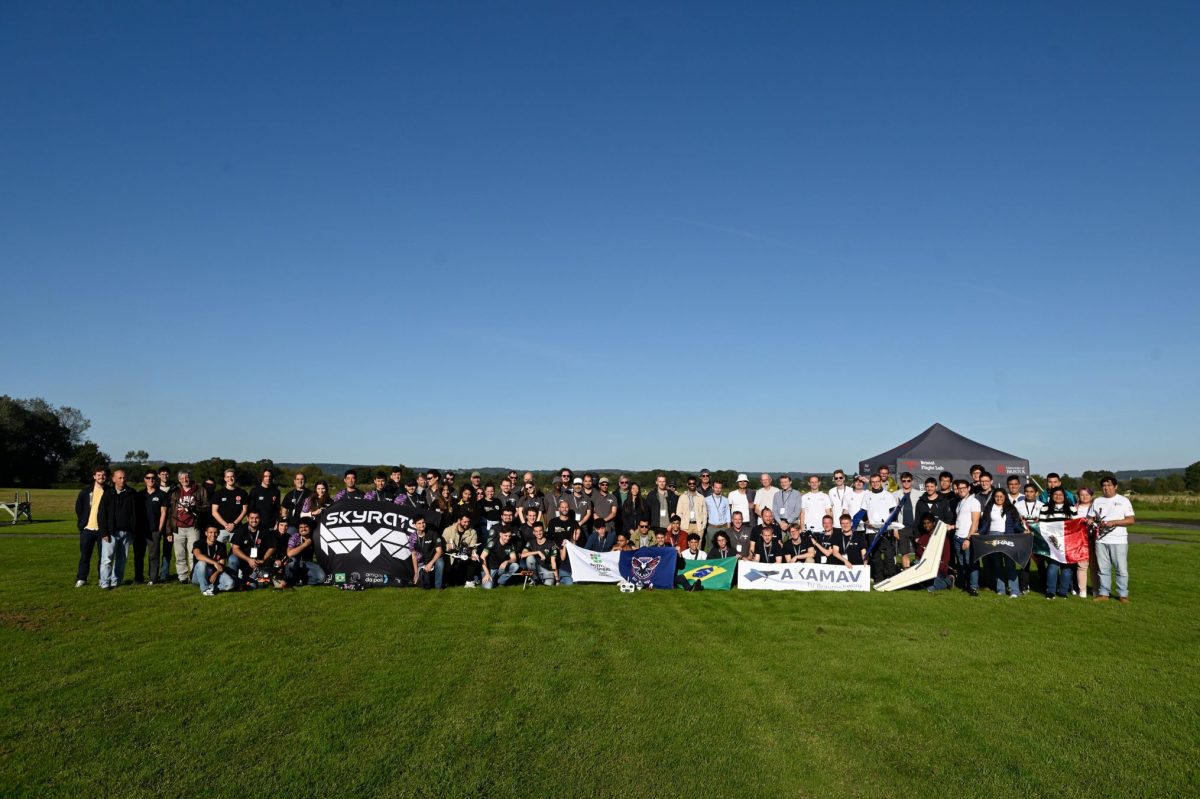Drones for animal and species conservation The AKAMAV student initiative excels at the IMAV competition in Bristol
Small unmanned aerial vehicles and big visions – the Academic Working Group Micro Aerial Vehicle (AKAMAV) is dedicated to the development of drones and their use. For the tenth time, the student initiative competed against 24 teams from 13 countries at the renowned International Micro Aerial Vehicle Conference and Competition (IMAV), which took place in Bristol this year. The topic was wildlife conservation – using autonomous aerial vehicles to protect animal and species. With a place on the podium in the outdoor competition and their first-ever participation in the challenging indoor competition, they showed how versatile autonomous drones can be in wildlife and conservation scenarios.
Protecting wildlife in inaccessible areas without interfering with the ecosystem is a major challenge. Small unmanned aerial vehicles (MAVs) or drones are of immense value. With precise camera systems and efficient control, they can fly over large areas without disturbing the natural behaviour of animals. Autonomous navigation and observation opens up completely new possibilities for preventing poaching or monitoring animal populations. The teams demonstrated these capabilities at the competition in Bristol, England.
AKAMAV devised a comprehensive operational plan, centred around two drones, known as quadcopters: the proven all-rounder “X500” and the mapping expert “Alexa”. The latter produced high-resolution aerial images, which were used to detect and count animal dummies using AI-assisted image processing. At the same time, the team developed a precise dropping mechanism for the “X500” to autonomously place a wildlife camera at a predetermined location. With success: the students placed second in the outdoor competition.
Indoor premiere
For the first time, the Braunschweig students also took part in an indoor competition without GPS navigation. The team therefore had to design a completely new aircraft from scratch. The indoor copter “Dove” completed the challenges – such as landing precisely on platforms and flying through narrow gates – using only stereo and distance cameras as well as innovative algorithms. The team finished in a respectable ninth place, proving that it can break new ground. AKAMAV was supported by the Institute of Flight Guidance, the Institute of Intermodal Transport and Logistics Systems at TU Braunschweig, as well as financial contributions from the Lower Saxony Research Centre for Aviation, the Faculty of Mechanical Engineering, the VDI Braunschweiger Bezirksverein e.V. and the Braunschweigischer Hochschulbund e.V., among others.
The next ambitious goal has already been set. In 2025, the team wants to be even more successful at the IMAV in Puebla, Mexico. Under the motto “Search & Rescue”, the aim is to construct drones that can be used in disaster areas to save human lives.
Practical studies
The team is currently looking for new, motivated members. “In addition to the fun of flying drones and gaining practical experience, we offer you the opportunity to exchange ideas with other committed students and scientists from around the world at international competitions and to realise added social value,” says Bennet Hetzel, who has been a member of the AKAMAV for three and a half years. “All fields of study are welcome!”
If you are interested in drones, 3D printing, (AI) programming, drone flying and teamwork, you are welcome to visit one of our weekly workshop meetings on Wednesdays at 7 pm at Schleinitzstraße 13 in Braunschweig, or contact us via Instagram or the website.






